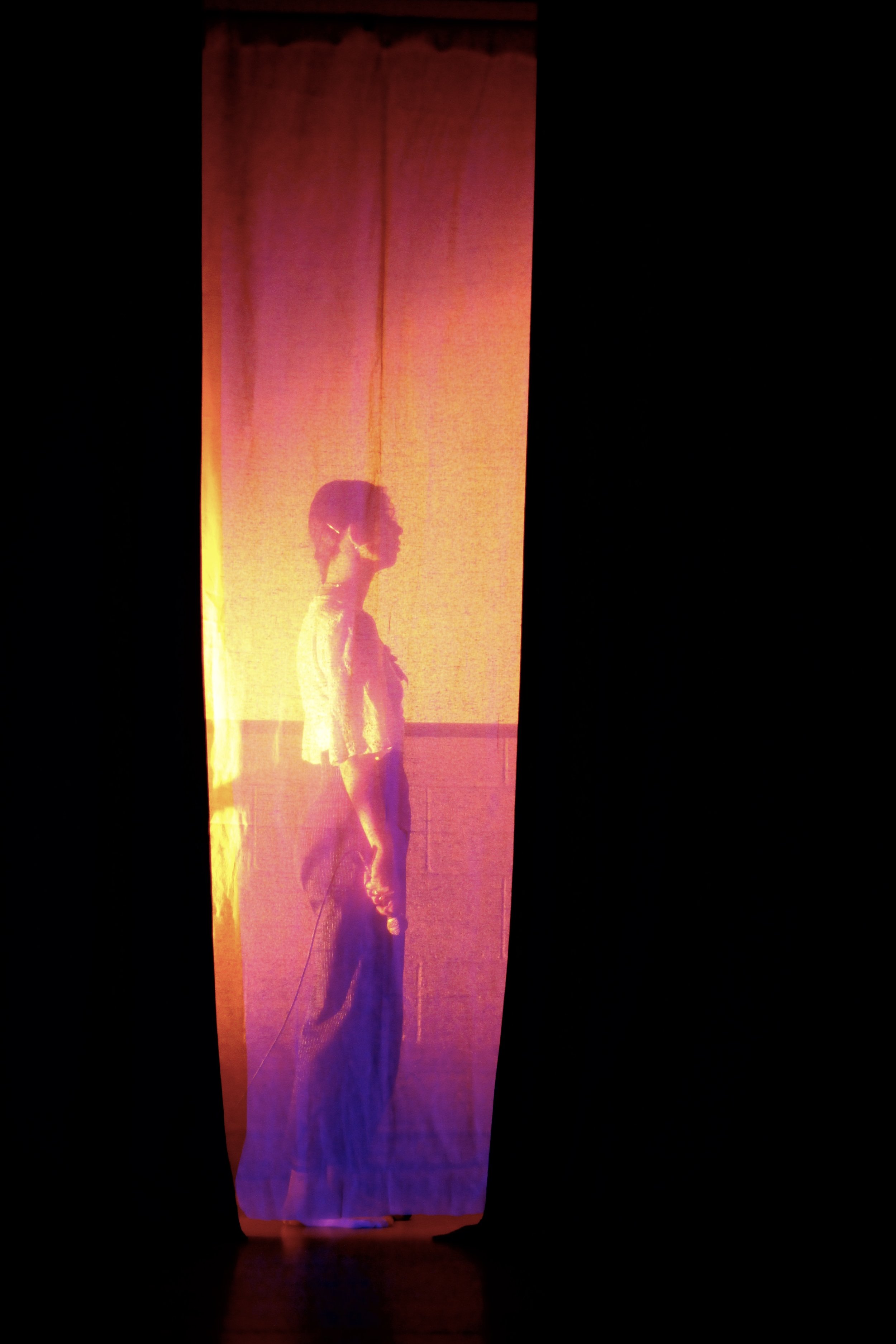Ja Za Wodom
“Jo za wodom Ty za wodom
Jak będziemy bywać z sobom
Naucymy konia pływać
Bedziemy ze sobom bywać”
A curtain. A river. A girl. A song.
One of us is inside, the other is outside. I sing with myself. A call and response. A longing to reach whatever it is that’s on the other side.
Ja Za Wodom is a solo performance that weaves scenography and Polish folk song into an interrogation of heritage. The piece uses gauze-like fabric and lighting to create a thin barrier between me and you.
Journal Entry:
“I’m thinking about barriers and boundaries (both physical and metaphorical) ... ‘The Curtain’ is an object that creates, and becomes, a barrier. There's a softness and domesticity that comes from it but nevertheless it is an object of isolation and partition. This led me to putting the words domestic, comfort, soft in opposition to the words segregation, distance, concealment ... it became clear that the text related to my own attitudes towards my heritage: ... 1. Wanting to be a part of something that arguably defines me but feeling very distant from it. Like standing outside a house on a winter night, looking into a warmly lit room. A nostalgia and longing for something that strangely feels like it didn't belong to me. 2. Being part of a culture that still contains political unrest, hatefulness and segregation. Feeling shame for the politics associated with your home, despite the simultaneous sense of pride, love and sharing of identity and values.“ (Ucar, D. Modified journal entry, 18 November 2021.)
Created & Performed by Dominika Uçar
Quotes that inspired the piece:
“[Cultural identity] is a matter of 'becoming' as well as of 'being'. It belongs to the future as much as to the past. It is not something which already exists, transcending place, time, history and culture. Cultural identities come from somewhere, have histories. But, like everything which is historical, they undergo constant transformation. Far from being eternally fixed in some essentialised past, they are subject to the continuous 'play' of history, culture and power. Far from being grounded in a mere 'recovery' of the past, which is waiting to be found, and which, when found, will secure our sense of ourselves into eternity, identities are the names we give to the different ways we are positioned by, and position ourselves within, the narratives of the past." (Hall, 2018)
“The emission of song is, in and of itself, the acoustic exhibition of embodiment. It is not a sound that comes from a mechanical instrument; rather, it is produced by the very body of the singer, the corporeal flux that emerges from the most hidden cavities, and which determines its particular “grain” . . . a peculiar, elusive, highly individualized, acoustic image of a specific embodiment.” (Beghelli, Erotismo Canoro in Cavarero, 2005, p.117)
“A single harmony binds them—perfect, repetitive, regular. And this harmony traps forever, in the discipline of its numerical rules, the most dangerous vocal creatures that the west has ever imagined.” (Cavarero, 2005, p.161)
“Disembodied, Echo finally becomes echo, the sound that the mountains send bouncing back, a pure voice of resonance without a body. Without a mouth, or throat, or saliva, without any human semblance or visible figure, the beautiful nymph is sublimated into a mineralization of the voice.” (Cavarero, 2005, p.166)
“If a scene might mean two things it should not be reduced to one. If speech contains its opposite, it should be played for its opposites” (Barker, 1993)
“The voice appears to be the locus of true expression, the place where what cannot be said can nevertheless be conveyed. The voice is endowed with profundity: by not meaning anything, it appears to mean more than mere words, it becomes the bearer of some unfathomable meaning which, supposedly, got lost with language“ (Dolar, 2006, p.31)
“We might be rather surprised to learn that the very institution of the political depends on a certain division of the voice, a division within the voice, its partition. For in order to understand the political, we have to discern the mere voice on the one hand and speech, the intelligible voice, on the other. There is a huge divide between phone and logos, and everything appears to follow from there, despite the fact that logos itself is still wrapped in voice” (Dolar, 2006, p.105)




